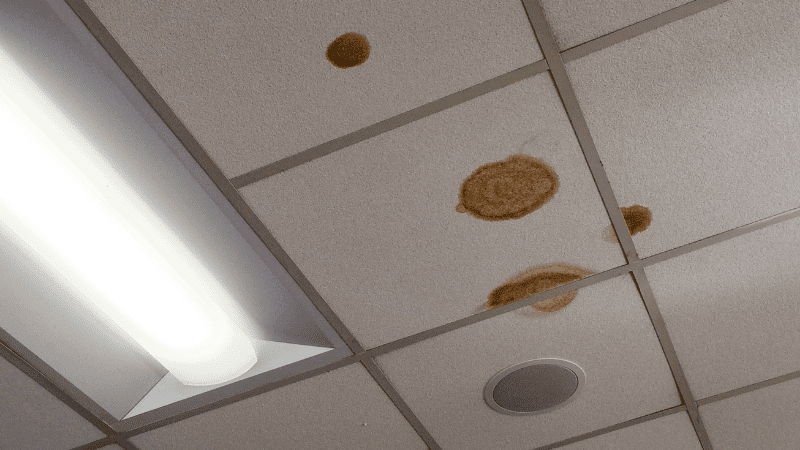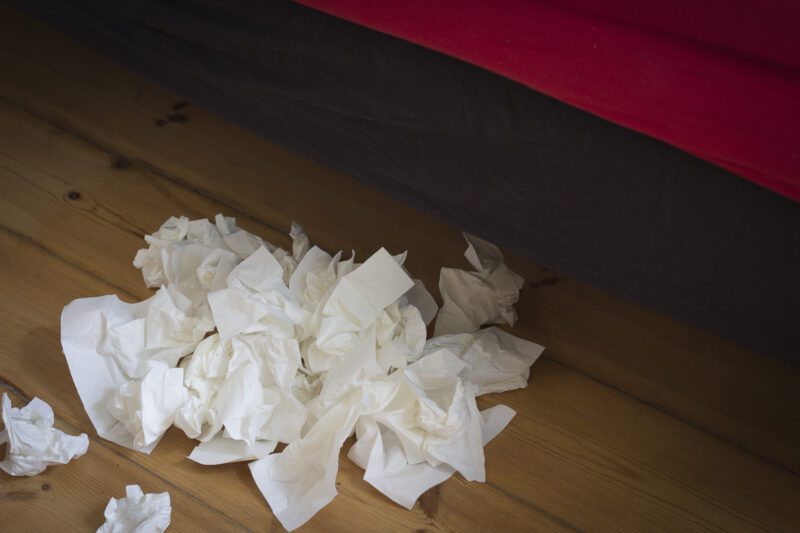Maryellen, a special education teacher, had a dry cough that never seemed to go away. The doctor said it was seasonal allergies, and it did always seem to get better over long breaks like winter and summer vacation. It wasn’t until another teacher in her building developed adult-onset asthma that they began to suspect their school’s air quality might be the culprit.
In 2020, a study from the U.S. Government Accountability Office found that 41% of schools are in need of updates to heating, cooling, or ventilation systems, proving there is an air quality problem in U.S. schools. Additionally, studies have found that poor indoor air quality in schools can lead to increased student absences as well as decreasing performance on standardized testing.
Here are the warning signs you could be teaching in a sick building:
Sign #1: Dry, Irritating Coughs

A persistent dry cough even though you drink water throughout the day? Dry, irritated eyes, sinuses, and throats are common in buildings where air quality isn’t up to par. Sometimes the problem is due to air not circulating enough in buildings that are well-insulated against outside temperatures. Other times, however, these symptoms can be signs of bigger issues.
Sign #2: Teachers Frequently Sick

Do teachers really have more robust immune systems than people in other professions? This could just be a commonly held myth. With this in mind, if you or your colleagues seem to be catching every cold, flu, or other sniffle your students are passing around, it might be an indicator that the air quality in your building is at least partially responsible.
Sign #3: Leaks and Stained Ceiling Tiles

Does your classroom ceiling look like this? Or does everyone in the building know that one water fountain leaks so much they just put a plastic bag around the pipes? Buildings that have moisture problems can also have mold problems. And mold can lead to a whole host of health issues. Nasal congestion, sinus infections, fevers, coughs, and chills are just a few.
Sign #4: Worsening Allergy and Asthma Symptoms

Years of dust, mold, and pollen could be building up inside your school if the air quality and ventilation are poor. This can lead to increased signs of allergy symptoms that don’t subside, including itchy eyes, nose, or throat. Additionally, those suffering from asthma may see worse or increasing symptoms from these irritants in the air. According to the EPA, “an average of one out of every ten school-aged children has asthma.” Asthma is already a leading healthy concern for students, and poor air quality is a contributing factor.
Sign #5: Wildly Fluctuating Temperatures

Does your classroom only seem to have two temperatures, way too hot or way too cold? If so, your building has an air quality problem. In fact, thermal control is a hugely important component in creating positive learning environments. Students struggle to learn in classrooms that are too cold or too hot. Adjusting classroom temperatures to improve thermal comfort can boost student performance by keeping them comfortable.
Sign #6: Little Furry Visitors

Mice are common pests in many schools and classrooms. From full storage closets where they can hide and burrow to cabinets full of snacks, mice can make a pretty good life for themselves in a school building. And as gross as it sounds, this means particles of their droppings, saliva, and fur can be in the air, waiting to cause problems. According to the EPA, rodents can spread more than 35 separate diseases. This can happen by direct contact with the animal or by coming into contact with their urine, feces, or saliva. While getting vermin out of the building is not an air quality issue, it’s important to make sure the air we breathe at school is clean and well-filtered.
Sign #7: Headaches on Schedule

For some of us, headaches are unfortunately a common part of the day. If, however, you start to notice that you develop a headache before noon each school day but not during other stressful situations, the air quality in your classroom or building might be responsible.
Sign #8: Mystery Symptoms

Headaches, nausea, dizziness, irritability, itchy eyes, respiratory illnesses, muscle tension, and other physical symptoms can have many causes. But working in a “sick building” might explain why you’re having those symptoms when the other causes don’t seem to apply anymore. The concept of “sick building syndrome” has been around since the 1970s when doctors started seeing patients with similar symptoms who all worked in the same buildings.
Plus, check out 7 more warning signs that your school’s indoor air quality is lacking.



